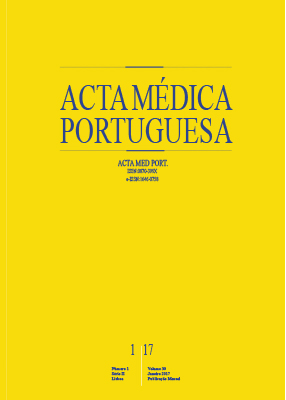The Portuguese Version of the European Deprivation Index: An Instrument to Study Health Inequalities
DOI:
https://doi.org/10.20344/amp.7387Keywords:
Europe, Health Services Accessibility, Health Status Disparities, Portugal, Socioeconomic Factors, Surveys and QuestionnairesAbstract
Introduction: Tackling socioeconomic health inequalities is a big public health challenge and ecological deprivation indexes are essential instruments to monitor and understand them. In Portugal, no standard ecological deprivation index exists, contrasting with other countries. We aimed to describe the construction of the Portuguese version of a transnational deprivation index, European Deprivation Index.
Material and Methods: The European Deprivation Index was developed under the Townsend theorization of deprivation. Using data from the European Union - Statistics on Income and Living Conditions Survey, we obtained an indicator of individual deprivation. This indicator became the gold-standard variable, based on what we selected the variables at aggregate level (census) to be included in the European Deprivation Index, a total of eight. The European Deprivation Index was produced for the smallest area unit possible (n = 16 094, mean/area = 643 inhabitants) and resulted from the weighted sum of the previous variables. It was then classified into quintiles.
Results: The first quintile (least deprived) comprised 20.9% national population and the fifth quintile (most deprived) 18.0%. The European Deprivation Index showed a clear geographic pattern – most deprived areas concentrated in the South and in the inner North and Centre of the country, and the least deprived areas in the coastal areas of North and Centre and in the Algarve.
Discussion: The development of the European Deprivation Index was grounded on a solid theoretical framework, individual and aggregate variables, and on a longitudinal Europe-wide survey allowing its replication over the time and in any European country.
Conclusion: Hopefully, the European Deprivation Index will start being employed by those interested in better understand health inequalities not only in Portugal but across Europe.
Downloads
Downloads
Published
How to Cite
Issue
Section
License
All the articles published in the AMP are open access and comply with the requirements of funding agencies or academic institutions. The AMP is governed by the terms of the Creative Commons ‘Attribution – Non-Commercial Use - (CC-BY-NC)’ license, regarding the use by third parties.
It is the author’s responsibility to obtain approval for the reproduction of figures, tables, etc. from other publications.
Upon acceptance of an article for publication, the authors will be asked to complete the ICMJE “Copyright Liability and Copyright Sharing Statement “(http://www.actamedicaportuguesa.com/info/AMP-NormasPublicacao.pdf) and the “Declaration of Potential Conflicts of Interest” (http:// www.icmje.org/conflicts-of-interest). An e-mail will be sent to the corresponding author to acknowledge receipt of the manuscript.
After publication, the authors are authorised to make their articles available in repositories of their institutions of origin, as long as they always mention where they were published and according to the Creative Commons license.









